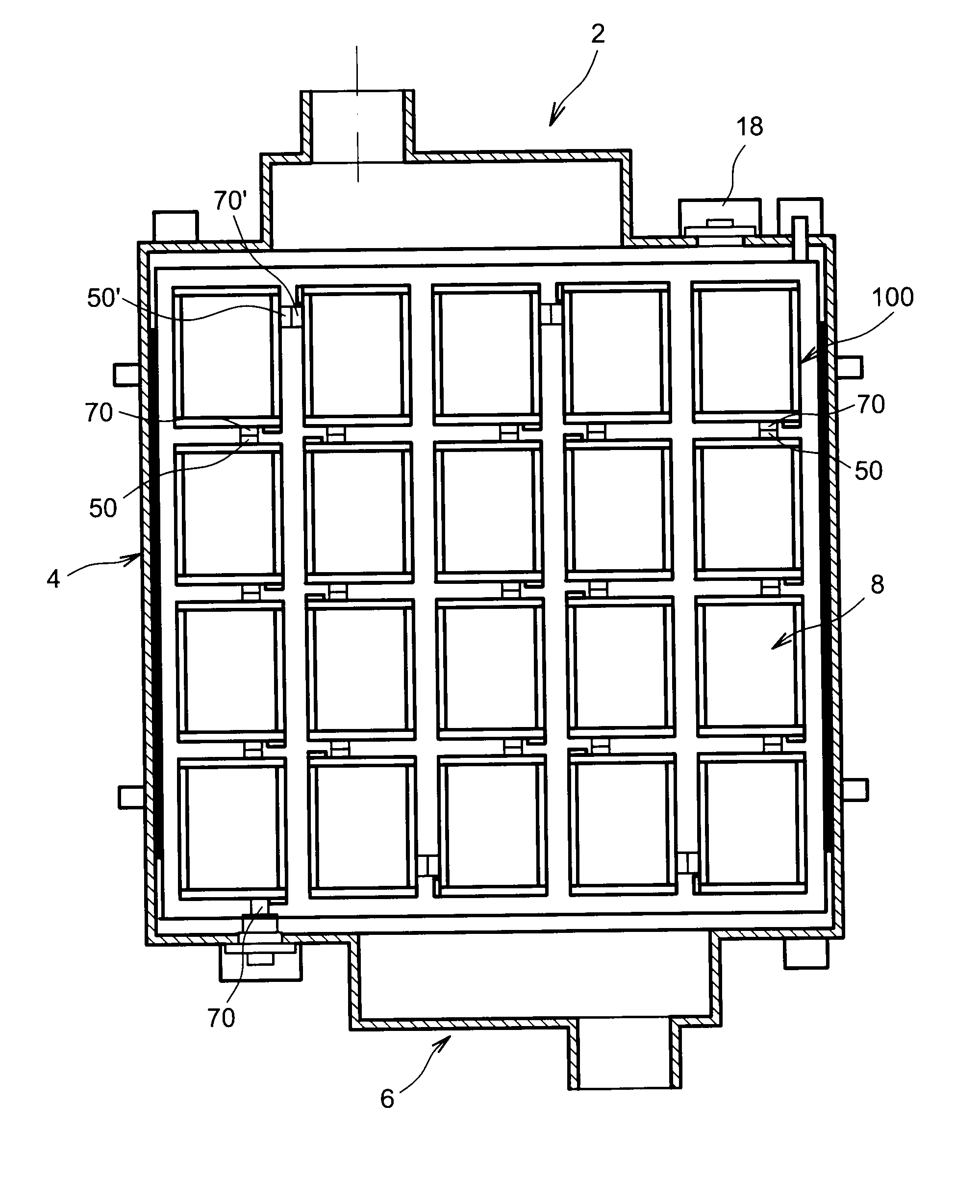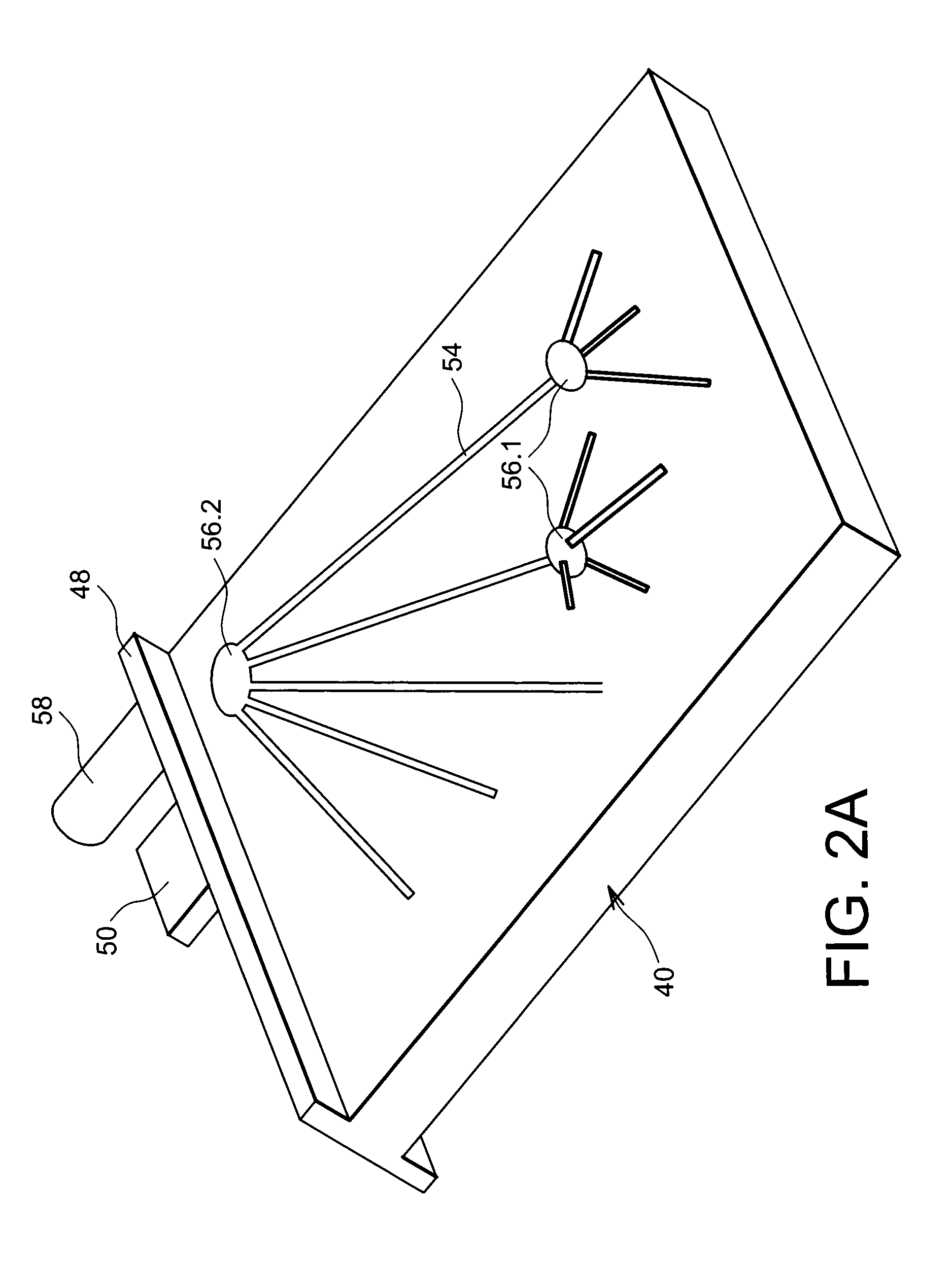High temperature, high pressure electrolyser with allothermal functioning and high production capacity
a technology of allothermal functioning and high production capacity, which is applied in the field of high temperature endothermal electrolysis, can solve the problems of increasing the cost of the whole boiler, and not being able to operate under high pressure i.e. several tens of bars of water vapour or food-grade mixtur
- Summary
- Abstract
- Description
- Claims
- Application Information
AI Technical Summary
Benefits of technology
Problems solved by technology
Method used
Image
Examples
first embodiment
[0072]In one first embodiment, the electrolysis cells are distributed in rows and columns, the cells of one same column being electrically connected in series, the columns being connected in series and the electrolysis plates being connected to each other in series.
second embodiment
[0073]In a second embodiment, the electrolysis cells are distributed in rows and columns, the cells of one same column being electrically connected in series, the columns being connected in series and the electrolysis plates being connected in parallel.
third embodiment
[0074]In a third embodiment, the electrolysis cells are distributed in rows and columns, each column comprising a lower number of cells than the number of cells in series corresponding to the breakdown voltage, said columns all being connected in parallel from one plate to another.
[0075]The enclosure may comprise an orifice for the supply of active fluid, provided on a side wall orthogonal to the electrolysis plates, which allows simplified design of the enclosure.
[0076]The enclosure comprises at least one orifice for the collection of the gas or gases generated at the cathodes on an upper wall of the enclosure, which improves the safety of the electrolyser.
[0077]The electric connections between the different plates and with and an electricity supply source are advantageously provided on the outside of the enclosure. Further preferably, said electric connections are cooled. This improves conductivity.
[0078]A further subject of the present invention is an installation to produce gas ...
PUM
| Property | Measurement | Unit |
|---|---|---|
| operating temperature | aaaaa | aaaaa |
| pressure | aaaaa | aaaaa |
| pressure | aaaaa | aaaaa |
Abstract
Description
Claims
Application Information
 Login to View More
Login to View More - R&D
- Intellectual Property
- Life Sciences
- Materials
- Tech Scout
- Unparalleled Data Quality
- Higher Quality Content
- 60% Fewer Hallucinations
Browse by: Latest US Patents, China's latest patents, Technical Efficacy Thesaurus, Application Domain, Technology Topic, Popular Technical Reports.
© 2025 PatSnap. All rights reserved.Legal|Privacy policy|Modern Slavery Act Transparency Statement|Sitemap|About US| Contact US: help@patsnap.com



